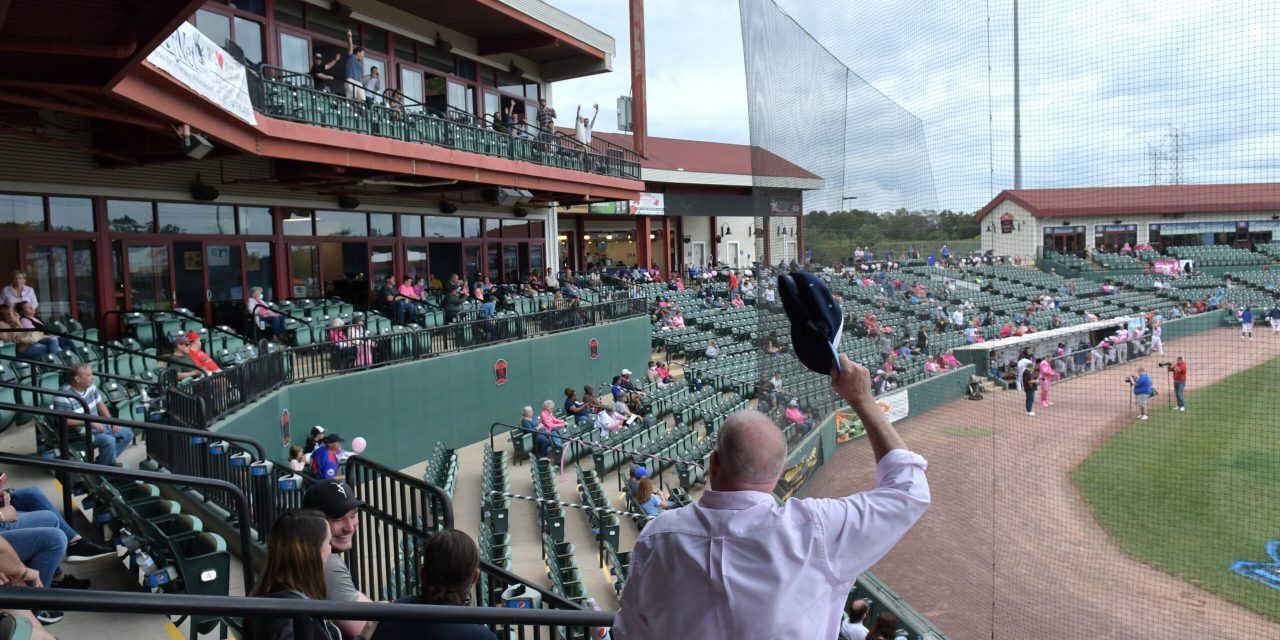By SAPNA BANSIL and DYLAN MANFRE
Regency Furniture Stadium, a $28 million ballpark paid for largely with taxpayer dollars, opened in 2008 in Waldorf, Maryland. Ever since it has been the home of the Southern Maryland Blue Claws of the Atlantic League of Professional Baseball.
Supporters forecast that the stadium would spur economic growth in the wealthy, rural community which surrounds it. Ten years later, the economic and demographic changes are mixed.
Using data from the American Community Survey, the Povich Center found that by 2018, both tax revenues and the population surrounding the ballpark nearly tripled, while rents increased by 31%. Residents of the area briefly also became more educated, though that change has largely reversed. Income levels experienced a modest decline, while housing valuations fell sharply.
Measuring the impact of a baseball stadium is complicated. Regency Furniture Stadium opened amid the crash of the housing market and a global recession. Trends observed in Waldorf are not necessarily predictors for other minor league ballparks like the one scheduled to open in Hagerstown in Spring 2024.
However, Waldorf could provide insight into the economic change resulting from the new ballpark in Hagerstown. Supporters are predicting that the publicly funded, $70-million stadium will revitalize the city’s downtown district.
“I expect all four of those categories to go up: property values, property taxes, income among the residents, and the education level of people moving into the downtown,” said Dan Spedden, president of the Hagerstown/Washington County Convention and Visitors Bureau.
Here’s a further look at how economic and demographic conditions shifted near Regency Furniture Stadium, the last publicly financed, independent league baseball stadium built in Maryland:
The population soared but was not the sole contributor to growth in the city.
Though the population near the site of Regency Furniture Stadium nearly tripled between 2008 and 2018, it still underperformed growth measured in Waldorf, suggesting that the stadium was not the sole driver of population growth in the city.
Tax revenues near the stadium site nearly tripled.
By 2018, properties near the stadium were generating $11.6 million in real estate tax revenue for the local government, nearly three times as much as the $4.1 million collected in 2008. Over that period, tax revenues near the stadium grew 4.5 times more than they did in the city and twice as much as a nearby community.
A more educated demographic moved near the stadium, but they did not stay.
In the first five years after Regency Furniture Stadium opened, the number of individuals with a bachelor’s degree who lived near the stadium jumped nearly 9 percentage points. Over the next five years, there was a decline of 7 percentage points. By 2018, the growth in education levels near the stadium resembled that of the city and underperformed a neighborhood community.
Amid a housing crisis and global recession, property values declined dramatically.
Housing prices plummeted after the crash of the housing market in 2008 triggered a global recession. Between 2008 and 2018, valuations near Regency Furniture Stadium fell by 26%, comparable to the decline city-wide but worse than the decline in a nearby community.
Rents continued to climb in an already expensive area
When Regency Furniture Stadium opened, the median rent price for a property near the stadium was $1,437, 15% higher than the median rent for the city. By 2018, rents had jumped nearly 31% to $1,875 and continued to outpace prices in the city and a nearby community.
The community surrounding the stadium remained wealthy.
Regency Furniture Stadium was built in a community where the median household income was over $109,000, 25% higher than income levels for the city. Ten years later, households around the stadium experienced a modest decline in income but remained 13% wealthier than incomes in the city.
About this analysis:
Data was obtained through the American Community Survey, a yearly supplement to the decennial census that collects information about education, housing and the economy, among other variables. The area around Regency Furniture Stadium was defined as the census tract containing the stadium. Census tracts are the smallest geographic units available for studying the variables in this analysis. They are defined as subdivisions of counties that contain up to 8,000 people. Additional analysis was completed for the city and a bordering census tract with a similar demographic profile.




Recent Comments